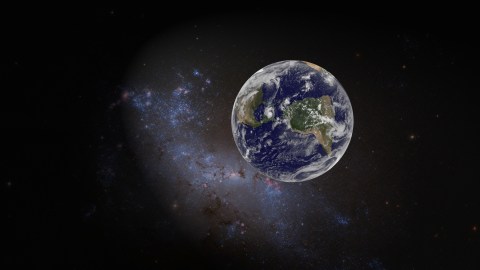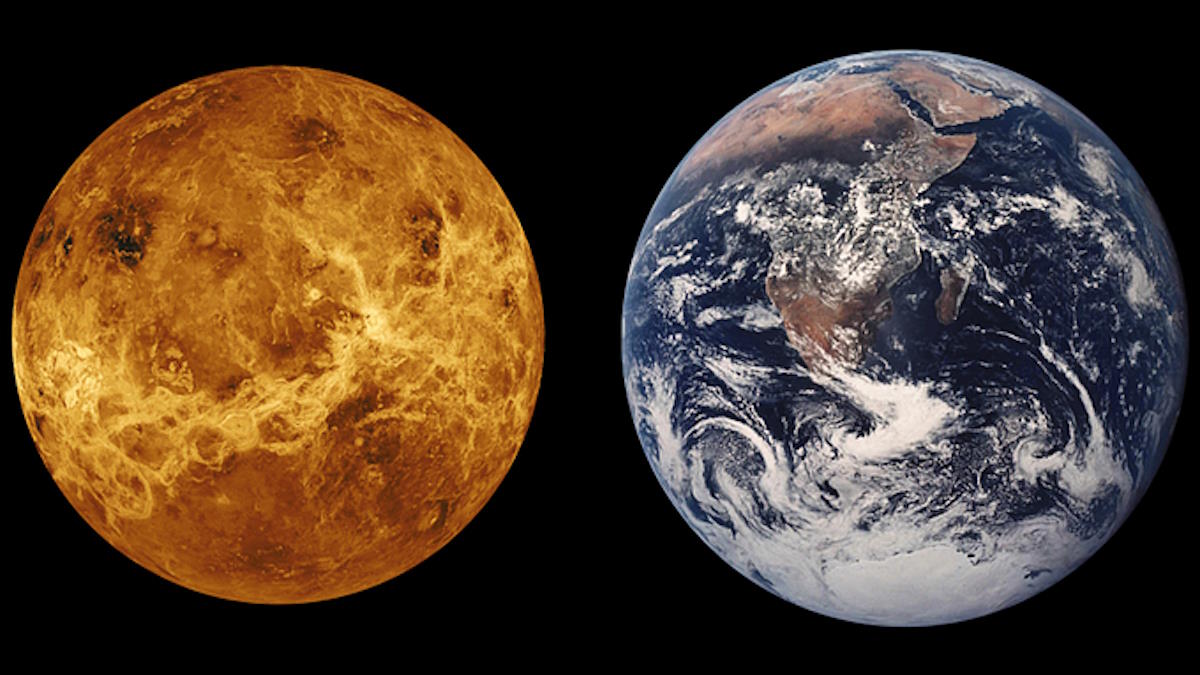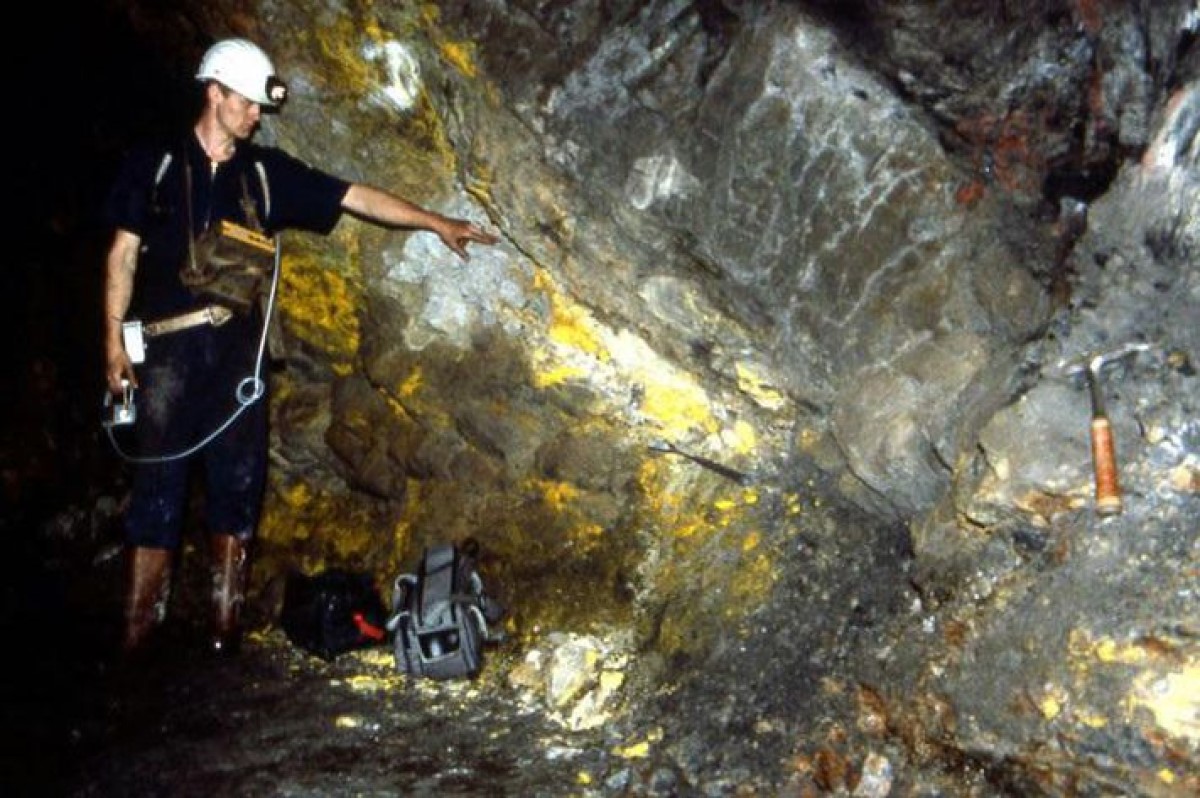Is human civilization Earth’s first?

A paper recently published in International Journal of Astrobiology asks a fascinating question: “Would it be possible to detect an industrial civilization in the geological record?” Put another way, “How do we really know our civilization is the only one that’s ever been on earth?” The truth is, we don’t. Think about it: The earliest evidence we have of humans is from 2.6 million years ago, the Quarternary period. Earth is 4.54billion years old. That leaves 4,537,400,000 years unaccounted for, plenty of time for evidence of an earlier industrial civilization to disappear into dust.
The paper grew out of a conversation between co-authors Gavin Schmidt, director of NASA’s Goddard Institute for Space Studies, and astrophysics professor Adam Frank. (Frank recalls the exchange in an excellent piece in The Atlantic.) Considering the possible inevitability of any planets’ civilization destroying the environment on which it depends, Schmidt suddenly asked, “Wait a second. How do you know we’re the only time there’s been a civilization on our own planet?”
Schmidt and Frank recognize the whole question is a bit trippy, writing, “While much idle speculation and late night chatter has been devoted to this question, we are unaware of previous serious treatments of the problem of detectability of prior terrestrial industrial civilizations in the geologic past.”
There’s a thought-provoking paradox to consider here, too, which is that the longest-surviving civilizations might be expected to be the most sustainable, and thus leave less of a footprint than shorter-lived ones. So the most successful past civilizations would leave the least evidence for us to discover now. Hm.
Earlier humans, or…something else?
One of the astounding implications of the authors’ question is that it would mean — at least as far as we can tell from the available geologic record — that an earlier industrial civilization could not be human, or at least not homo sapiens or our cousins. We appeared only about 300,000 years back. So anyone else would have to have been some other intelligent species for which no evidence remains, and that we thus know nothing about. Schmidt is calling the notion of some previous non-human civilization the “Silurian hypothesis,” named for brainy reptiles featured in a 1970 episode of Dr. Who.
Wouldn’t there be fossils?
Well, no. “The fraction of life that gets fossilized is always extremely small and varies widely as a function of time, habitat and degree of soft tissue versus hard shells or bones,’ says the paper, noting further that, even for dinosaurs, there are only a few thousand nearly complete specimens. Chillingly, “species as short-lived as Homo Sapiens (so far) might not be represented in the existing fossil record at all.”
The odds of the preservation of objects are just as small. Our idea of old is something like the Antikythera mechanism from 205 BCE, and the paper concludes that for “potential civilizations older than about 4 Ma[million years], the chances of finding direct evidence of their existence via objects or fossilized examples of their population is small.”
What kind of evidence would we leave behind?
Schmidt and Frank assert that the best we can do is to catalog the kind of evidence that our Anthropocene era will leave that could withstand hundreds of millions of years. It’s not much, obviously.
- Telltale isotopes — Our use of carbon in fossil fuels is diluting the amount of 14CO2 isotopes in the atmosphere, a phenomenon called the “Seuss effect.” Increases in temperature also leave isotopic evidence. Both of these could be detectable to future geologists (no matter how many arms, legs, or eyes they have) should they dig up now-exposed rock layers.
- Fertilizer’s effects — The nitrogen fertilizers we’re using to grow food is running off into rivers, producing higher concentrations of microbial activity in the coastal areas where these rivers meet the sea. The resulting decomposition of overgrown algae in these areas steals oxygen from the water, producing an increase in ocean dead zones, all of which should be visible in sedimentary layers.
- Rare earth materials — Rare earth elements we’ve dug up to use in our electronics will show up in telltale concentrations on the surface layers from our era.
- Steroids and such — Synthetic chemicals we produce, such as steroids, may also remain visible in the geologic record.
- Extinctions — As the paper puts it, “species have already, or are likely to become, extinct, and their disappearance from the fossil record will be noticeable.”
- Plastic, plastic, plastic — All of the plastic we’re manufacturing and discarding stands to be broken down into particles that will eventually settle on the ocean floor and will likely remain in the sedimentary layer for a very long time.
- Radioactive glow — Plutonium-244 and Curium-247 from explosions and nuclear waste will remain present for just a while: About 80.8 million years (Plutonium) and 15 million years (Curium).
A big question with no answer
The authors of the paper don’t actually think there were any civilizations predating humans on earth, but the point they’re making is that we honestly have no way of knowing if this is so. In part, it’s because we’re not even clear on what evidence of their existence would look like should we encounter it. If this reminds you of the difficulty we may be having recognizing extraterrestrial intelligent life, it should. We don’t know what we’re looking for there, either, and it’s not a coincidence that it’s two space scientists who are raising this haunting question.





